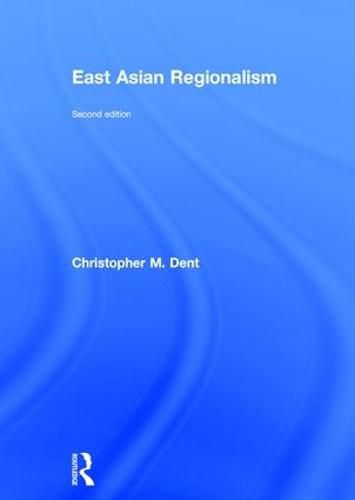Readings Newsletter
Become a Readings Member to make your shopping experience even easier.
Sign in or sign up for free!
You’re not far away from qualifying for FREE standard shipping within Australia
You’ve qualified for FREE standard shipping within Australia
The cart is loading…






East Asia is one of the world’s most dynamic and diverse regions and is also becoming an increasingly coherent region through the inter-play of various integrative economic, political and socio-cultural processes. Fully updated and revised throughout, this new edition explores the various ways in which East Asian regionalism continues to deepen.
The second edition has been expanded to incorporate coverage of significant issues that have emerged in recent years including:
Growing tensions in the region over maritime territory and historical issues
Competing regional free trade agreement negotiations
The impact of the global financial crisis on financial co-operation and engagement with global governance
Obama’s ‘pivot to Asia’ and developments in US relations with East Asia
The influence of new technology and social media on micro-level regional relations
The growing importance of ‘new diplomacy’ issues such as energy security, climate change, food security and international migration.
Key pedagogical features include:
end of chapter ‘study questions’
case studies that discuss topical issues with study questions also provided
useful tables and figures which illustrate key regional trends in East Asia
Extensive summary conclusions covering the chapter’s main findings from different international political economy perspectives.
East Asian Regionalism is an essential text for courses on East Asian regionalism, Asian politics and Asian economics.
$9.00 standard shipping within Australia
FREE standard shipping within Australia for orders over $100.00
Express & International shipping calculated at checkout
East Asia is one of the world’s most dynamic and diverse regions and is also becoming an increasingly coherent region through the inter-play of various integrative economic, political and socio-cultural processes. Fully updated and revised throughout, this new edition explores the various ways in which East Asian regionalism continues to deepen.
The second edition has been expanded to incorporate coverage of significant issues that have emerged in recent years including:
Growing tensions in the region over maritime territory and historical issues
Competing regional free trade agreement negotiations
The impact of the global financial crisis on financial co-operation and engagement with global governance
Obama’s ‘pivot to Asia’ and developments in US relations with East Asia
The influence of new technology and social media on micro-level regional relations
The growing importance of ‘new diplomacy’ issues such as energy security, climate change, food security and international migration.
Key pedagogical features include:
end of chapter ‘study questions’
case studies that discuss topical issues with study questions also provided
useful tables and figures which illustrate key regional trends in East Asia
Extensive summary conclusions covering the chapter’s main findings from different international political economy perspectives.
East Asian Regionalism is an essential text for courses on East Asian regionalism, Asian politics and Asian economics.